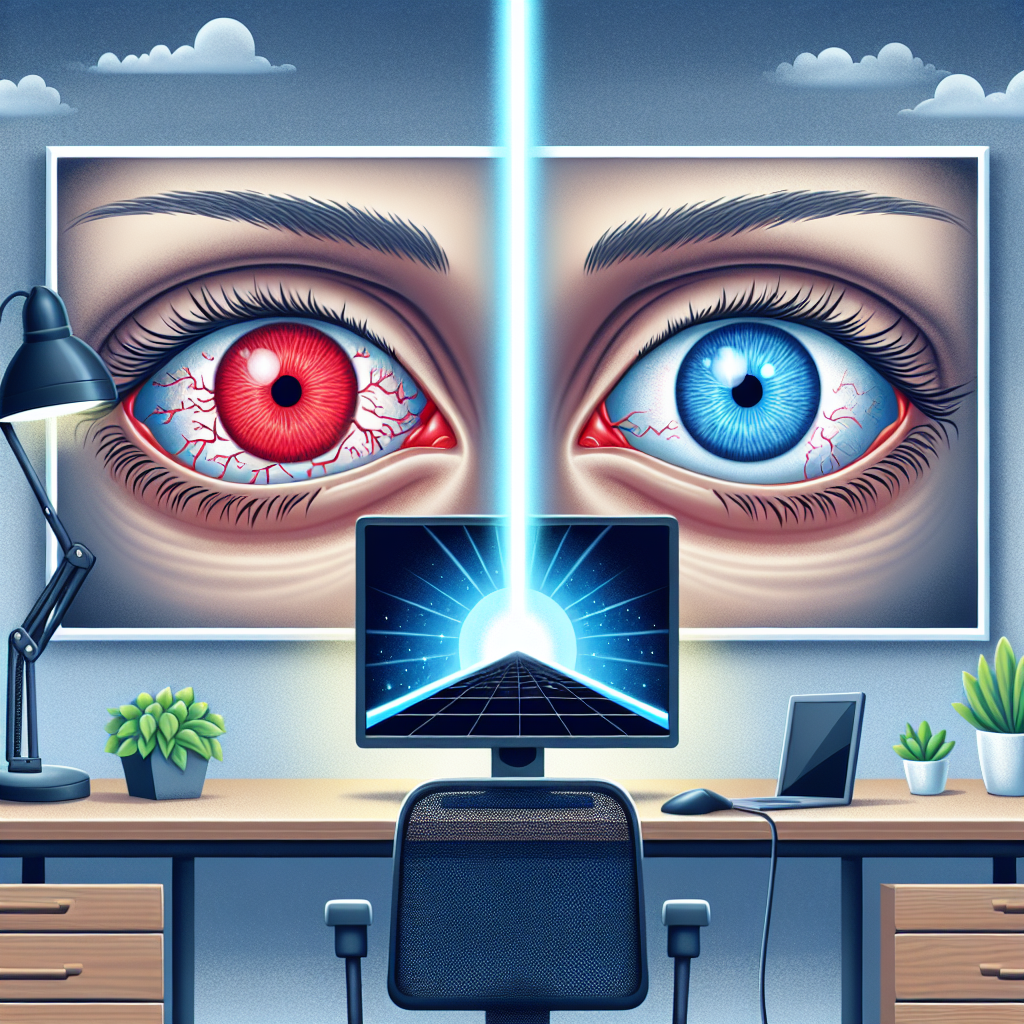With the proliferation of screens in our daily lives, eye strain has become a common concern for many. Monitors that emit low blue light are designed to mitigate this issue. In this article, we delve into how these monitors impact eye strain and the science behind their benefits.
Understanding Blue Light
Blue light is a part of the visible light spectrum with wavelengths between approximately 380 and 500 nanometers. It has the shortest wavelengths and thus the highest energy, which is why it can have a significant impact on our eyes and overall health.
The table below summarizes the different types of light wavelengths:
| Type of Light | Wavelength Range (nm) |
|---|---|
| Ultraviolet Light | 10-400 |
| Visible Light | 380-700 |
| Blue Light | 380-500 |
| Red Light | 620-750 |
The Impact of Blue Light on Eye Health
Excessive exposure to blue light can lead to digital eye strain, characterized by symptoms such as dryness, irritation, headaches, and blurred vision. Moreover, prolonged exposure can potentially damage retinal cells and disrupt the sleep cycle by interfering with melatonin production.
What are Low Blue Light Monitors?
Low blue light monitors are screens explicitly designed to reduce the blue light emission compared to standard monitors. These monitors often come with built-in technologies like blue light filtering and customizable settings that allow users to adjust the blue light levels.
Key Features of Low Blue Light Monitors
- Blue Light Filter Technology: Reduces the emission of high-energy blue light
- Customizable Settings: Allows users to choose the level of blue light reduction
- Flicker-Free Technology: Minimizes screen flickering to reduce eye strain
- Comfortable Viewing Modes: Modes such as ‘Reader’ or ‘Night’ that are easier on the eyes
The Science Behind Low Blue Light Monitors
Numerous studies suggest that reducing blue light exposure can significantly lessen eye strain and improve overall eye comfort. For instance, a study conducted by the Vision Council found that nearly two-thirds of Americans experience symptoms of digital eye strain, largely due to blue light exposure. By using monitors with low blue light emissions, users can reduce these symptoms.
Scientific Evidence
- Reduction in Eye Strain: Studies have shown that low blue light screens can reduce symptoms of eye strain by up to 50%.
- Improved Sleep Patterns: Blue light reduction helps maintain natural sleep cycles by not interfering with melatonin production.
How to Choose a Low Blue Light Monitor
Choosing the right low blue light monitor is crucial for maximizing the benefits. Here are some tips
- Check Certification: Look for monitors with certifications from organizations like TUV Rheinland
- Adjustability: Ensure the monitor offers customizable blue light levels
- Additional Features: Opt for features like flicker-free technology
Low blue light monitors are not merely a trend but a necessity in today’s digital age. By understanding their benefits and choosing the right monitor, you can significantly reduce eye strain and improve your overall eye health.

